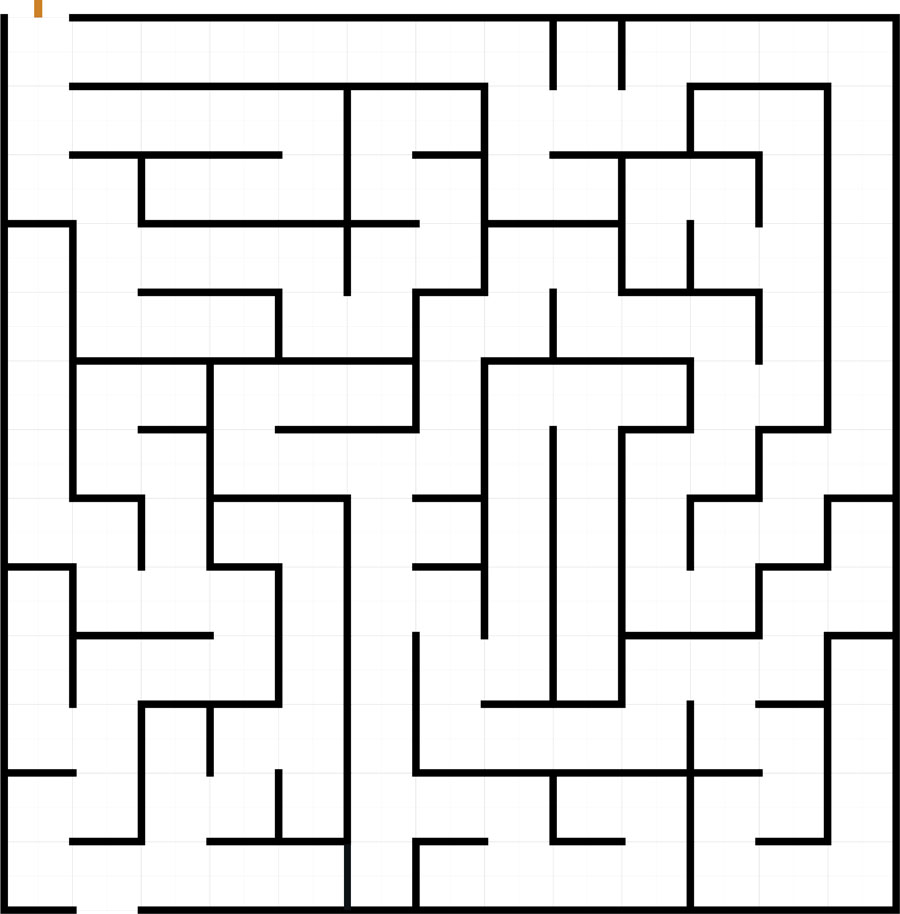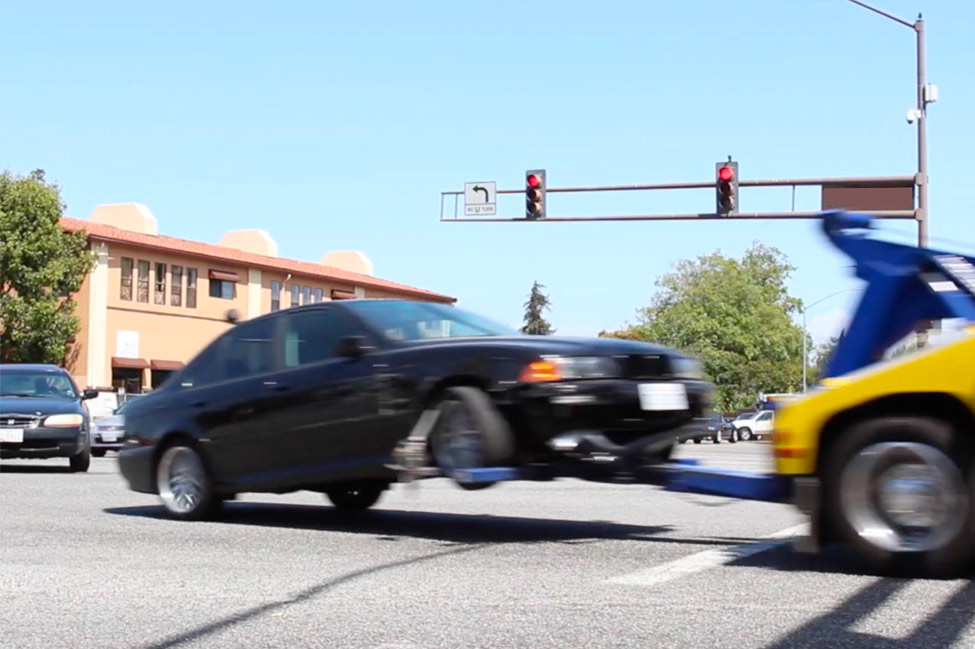How To Retain Tow Truck Drivers
When growing a towing business, one of the most formidable challenges tow company owners must contend with is how to find quality tow truck operators. Also, and even more important, is how to retain tow truck drivers for the long term.
It’s no secret that a constant churning of tow truck operators can negatively impact your business. The good news is, there is something you can do to diminish this churn, but it takes thinking about your business and the people who work with you, in it, in a whole new light.
To the majority of the world, the job of a tow truck operator may seem boring or mundane. Because what most people see is just someone driving a tow truck. And in many instances the motoring public simply believes the guy in the front seat is just another angry tow truck driver. Of course, we know this not to be true.
Tow company owners are highly aware of the various trials their tow truck operators contend with every day. These can include, challenging recoveries with time constraints, loading and towing vehicles in heavy traffic, parking enforcement difficulties, and even dealing with impatient, angry customers.
Due to these challenges and more, over time the stress can tend to break your people down. Moreover, if not appropriately managed, this can lead to higher instances of damages and increased turn-over. However, tapping into and improving the willpower your tow truck operators possess may hold a solution that can decrease, if not eliminate these problems.
Tapping into and improving willpower may hold the solution to how to retain tow truck drivers
Improved Willpower Retains Tow Truck Drivers
In Charles Duhigg’s book, The Power of Habit, he cites a study on willpower involving 67 undergraduate students. The subjects were placed, one at a time in a research room with a two-way mirror for monitoring. In the room on a table were two bowls of food. One bowl contained freshly baked chocolate chip cookies and the other contained radishes.
The Willpower Test

Each participant was instructed how to proceed. Half of the participants were told to only eat from the bowl containing the bitter radishes and to ignore the warm baked cookies. The other half were told to eat only from the chocolate chip cookie bowl and to ignore the radishes.
As you might imagine, the ones who were instructed to eat the cookies had no problem ignoring the radishes, as they were enjoying, warm chocolate chip cookies. On the other hand, the participants who were instructed to eat the radishes and ignore the cookies had a difficult time doing so. Some even picked up the cookies and smelled them, then put them back and licked the chocolate off their fingers.
After about 15 minutes of eating, the participants from both groups were then individually instructed to attempt to solve a puzzle. The only snag though was, the puzzle was unsolvable.
Here’s where it got interesting
The participants who were instructed to ignore the chocolate chip cookies became frustrated with the puzzle much sooner than the participants who were told to ignore the radishes.
On average, the radish eaters gave up trying to solve the puzzle within 9 minutes. The participants who were instructed to ignore the radishes, however, spent on average 19 minutes on the unsolvable puzzle. Some of them even had to be stopped by the researchers.
Those who had expended willpower by not eating the cookies spent far less time trying to solve the puzzle
The reason the “Cookie Eaters” were willing to continue trying to solve the puzzle, the researchers determined, was because they hadn’t exhausted their supply of willpower.
The point, as Duhigg points out is that “Willpower isn’t just a skill. It’s a muscle, like the muscles in your arms or legs, and it gets tired as it works harder, so there’s less power left over for other things.”
How Willpower Affects Tow Truck Operators
If a tow truck operator starts his morning being berated by an irate customer, because the customer had to wait 1 ½ hours for a tow, it requires willpower for him to respond appropriately.
When provided the right tools, an appropriate response might be to calmly explain the situation, empathize with the customer and apologize for the inconvenience. Of course, depending on the situation, and how difficult the operator finds it to restrain the urge to yell back at the customer, varying amounts of willpower will be expended.
If by the end of the day, this same tow truck operator has experienced a few more minor setbacks and then must perform a potentially tricky accident recovery, there may be little left in his willpower tank to come up to the task.
Moments of decreased willpower is where mistakes can happen, and where operators begin to question their choice of vocation.
The good news is this. If willpower is like a muscle that can become weakened as it is taxed, then it can also become strengthened over time through discipline and training.
Providing your tow truck operators with strategies that allow them to achieve higher levels of willpower will not only help your business and your customers, it will also give your operators a tool they can use for the rest of their lives.
Why Tow Truck Operators Respond the Way They Do
Another study in The Power of Habit was one done on lab rats. Researchers attached electrodes to the brains of rats to see what part of the brain became active during specific segments of the experiment.
The researchers placed rat after rat, hundreds of them, all wired with electrodes into a T shaped tube. The rats would remain hidden behind a partition at the very end of the tube until the partition opened. At the other end of the T, at the very end of the tube was a piece of chocolate. When the partition door came open, it was the rat’s job to find the chocolate.

The researchers did the experiment thousands of times and watched as each rat’s brain waves followed the same pattern.
Hidden behind the partition, the rats could smell the chocolate somewhere in the tube and instinct told them to find it.
And, at first, when the partition opened, their brain activity increased immensely and remained at a high level as they sniffed from side to side searching for the chocolate. However, as each rat went through the same experiment hundreds of times, researchers made an incredible discovery that they didn’t expect.
Over time, rather than sniffing from side to side as before, the rats made a beeline, straight to where they had found the chocolate numerous times. Also, now, after becoming accustomed to the experiment their brain activity was no longer increased. Their brain activity remained low because the rats had developed a new habit.
What the researchers discovered was that our brain forms habits because it takes an enormous amount of energy to keep it fueled. Per gram of tissue, our brain consumes as much as ten times as much energy as the rest of our body. Also, as we’ve evolved over thousands of years, our brain has found various ways to conserve the energy it needs to survive and thrive, and one way is by turning the things we do every day into habits.
As our brain has evolved over the millennia, to conserve energy, it has turned the things we do every day into habit.
A tow truck operator’s brain is no different. Throughout each day, he reacts to things, like being cut off in traffic. Each time this happens his reactions are uncannily identical. Many times, there’s yelling and hand gestures. His reward for his response is a feeling of righteous vindication, or something else equally gratifying. During this process, day-in and day-out, his brain is paying attention, soaking up the data it receives.
The particular part of the brain we’re talking about here is known as the Basal Ganglia, where habits are formed. Whatever repetitive thought or action the Basal Ganglia determines requires too much energy, or where it determines clear, concise decision making may not be necessary, is relegated to habit. However, even though these newly formed habits require less energy, continued negative outbursts will only aid in decreasing a tow truck operator’s willpower and do nothing to instill discipline.
How To Retain Tow Truck Drivers Through Habit Change
Duhigg contends that habits consist of three components:
1. The Cue (The thing you are reacting to)
2. The Routine (What you do in response to the thing)
3. The Reward (The reward you receive for responding the way you did)
Unfortunately, contrary to what many of the self-help books will tell you, habits cannot be eliminated, they can only be replaced.
So, to turn a bad habit into a good one, you must change one of the components of the habit, the Routine. The good news is, if you help your tow truck operators understand why they react in the manner that they do, and provide them the tools to make a change, you can positively impact your business, as well as their lives.
Now that you know that much of how we respond to the things happening around us every day are due to ingrained habit, and that changing just one component of that habit, the Routine, can turn a bad habit into a good one, let’s discuss how to retain tow truck drivers using this information.
Why Tow Truck Operators Leave
One of the reasons tow truck operators leave is due to burn-out. After days, months, or years, without proper discipline and training, a tow truck operator’s willpower can become depleted, and they soon become more inclined to head for the exits. But getting your drivers to understand that harmful habits are what’s driving their decision making, and causing them to feel burned-out can be somewhat tricky. What’s even harder is getting them to change.
Keys to Tow Truck Operator Retention
1. Give Your People a Degree of Control
The first key to retaining quality tow truck operators is to give your people a degree of control. I learned this lesson in my own business a long time ago.
My towing company was a 24-hour operation with 12 trucks and 25 full/part-time drivers. We were primary for many of the motor clubs and served on rotation for five different law enforcement agencies. And one thing I always questioned during my time in the towing business was, are motor clubs a shortcut to mediocrity or a necessary evil for growing your business? We had dozens of house accounts and hundreds of regular customers. As many towing companies, our services ranged from a simple motorcycle tow across town to responding to tractor-trailer rollovers, where we would be required to show up with an army of manpower and equipment within minutes of receiving the call.
I’m telling you all of this, not to brag, but so that you understand the chaos that had to be managed on a daily basis.
To serve this wide range of customers and their various needs meant, we needed to have competent tow truck operators available at a moment’s notice. To achieve this availability, we operated with two shifts, a day crew and an evening crew.
The day crew came in between the hours of 6:00 AM and 8:00 AM and went home when the evening crew came in, which was between 4:00 PM and 6:00 PM. The evening crew then went home around 10:00 PM. Between the hours of 10:00 PM to 6:00 AM, we had zero operators scheduled on duty. We responded to calls at this time through the use of two on-call calendars, one for light duty and one for heavy-duty.
For those of you who don’t know what an on-call calendar is, I’ll explain. An on-call calendar is a monthly calendar the night dispatcher uses to determine whom to call when an after-hours call comes through. It has the names of the drivers who should be called, with the corresponding dates they are supposed to be available throughout the month.
For years, as the owner, I took responsibility for creating these calendars. Before the month would start, I would determine what nights each driver would be on-call. I would do my best to ensure that no one or two drivers were overloaded with after-hour shifts, dividing the nights as equally as possible among my guys.
As the end of each month approached, drivers would either talk to me directly or write a note informing me of their availability on certain nights for the upcoming month. If they wanted off a specific night, I would then be required to find someone else to fit that slot or take the slot myself.
As time went by, it became apparent that something had to change. I was working way too many on-call shifts, not only because of the requests to be off but also due to a lack of personal responsibility on the part of some of my drivers.
Due to a slew of excuses including, “my phone was dead,” and “I didn’t know I was on-call,” sometimes it became difficult for the night dispatcher to get in touch with the on-call driver, resulting in me having to get out of bed and run the call. I decided that there must be a better way, and I was determined to find it.
At first, I attempted to reason with the guys, explaining the need for seamless availability. When that didn’t work, I tried a little leverage in the form of implying that new blood was what was needed. Of course, these not-so-veiled threats were intended to suggest that the new guy, if hired, would need to fit in somewhere and that somewhere might be in an existing operator’s tow truck. However, these tactics did not bring about the desired result.
I then decided to try something new. I wasn’t entirely sure it would work and was a little hesitant at first, but I knew something had to change. What I did was give the drivers the on-call calendars and the responsibility of collaborating to fill in all of the slots before the beginning of each month. And…it worked.
At first, there was what I call “a honeymoon period,” where they felt empowered and excited to have some semblance of control. Then after about six months or so, the novelty began to wear off, but the nights were still being covered.
The drivers would have a meeting in the break room once or twice a month and would text or call those who weren’t able to attend, to see what shifts they could cover. And as the months went by, I began to notice something starting to change in how they interacted with each other.
With control of the on-call calendars, rather than coming to me because they wanted to be off on a particular night, they were required to talk to each other. This talking and cooperation created an understanding of the value each person brought to the table. If Rick wanted to be off, he would ask Tyler if he could do it, and then the next time Tyler needed some time off, Rick was more than willing to help out.
I never told them this, I know now that I should have, but after I saw how well they were cooperating with each other, I grew to respect and appreciate them more.
Also, this cooperation spilled over into other areas of the business. When one driver would experience difficulty removing a drive-shaft or need assistance with a difficult recovery, rather than wasting time and figuring it out on his own, he felt completely secure in texting or calling one of the other drivers for advice.
Instead of competing with each other for bragging rights, they became like a band of brothers who help each other through tough times.
When you give your people a degree of control in their jobs, it starts to build their decision-making muscles. Building their decision-making muscles instills in them the discipline they need and a sense of ownership and belonging to something that’s bigger than themselves. When they feel part of something good, they’ll have more of a reason to stay.
2. Recognizing and Retraining
When I was in high school and college, I participated in both Cross-Country and Track. I was a long-distance runner, which meant in competitions, I would race a variety of distances, from as short as 1 mile to as much as 8k, which is just shy of 5 miles. And, during every race, I would experience pain. Of course, my pain wasn’t anything unusual. Everyone in the race experienced some degree of pain. It was just a natural side effect of giving it all you got.
In my junior year of high school, my Cross-Country coach taught me a valuable lesson about dealing with this pain, one that continues to help me to this day in every area of my life.
My coach said the first step to working through the pain was to acknowledge it and become comfortable with the fact that the pain would come.
Regardless of how hard we trained, and how much we wished the pain would no longer be present during a race, it would still be there, and we were told to accept it, even embrace it.
The next step he said was to make a decision before-hand, what we would do when feeling the pain. We could choose to either to give in to the pain and come off our pace (slow down) to decrease the intensity of the pain, or push-through the pain and keep going at the same speed.
He said that pushing-through would result in continuous improvement.
Coach explained that regardless of which choice we made, reacting in the same manner over and over, whenever the pain would arise, would build what he called a highway in our brains. Whichever way we chose, that decision would get more accessible and more comfortable to make each time because the highway would get wider and wider.
Although I didn’t understand it at the time, Coach’s workouts were designed to allow us to experience similar levels of pain and discomfort to what we would have in a race setting. These strenuous workouts gave us more and more opportunities to make good choices. He even gave us visualization exercises, where we would see ourselves running a race, and when the pain would come, we could visualize ourselves pushing through it and running a good time.
Coach was using what Duhigg would later call the habit-loop. The pain was the cue, my reaction to the pain, maintaining my pace, was the routine, and the reward was running a good race. I learned that if I created a new, positive routine, and I did it over, and over, again, eventually it would become a habit. And, over time my Basal Ganglia will take over and do all the heavy lifting for me.
Habit Loop
1. The Cue (Pain)
2. The Routine (Maintaining My Pace)
3. The Reward (Running A Good Race)
You don’t need to be a runner for this to be valuable. This approach is highly useful for changing any behavior. You can use this tool to improve any negative thought process. Moreover, your drivers can use it to change how they react to a customer complaint.
The first step to making a change is finding what Routines kick-in when specific Cues are activated.
For example; One of my clients, and for the sake of anonymity I’ll use the name, James, when checking his accounts receivables, James would go down the list, and when he landed on a customer whose account was 30 days, or more past due, he would howl and immediately start cussing.
Over time, his reaction caused him to begin to think of that customer in a bad light, even if the customer had always paid their bill, and had been a loyal customer for more than a decade. This routine would put him in a negative state that usually lasted for hours.
After first identifying the BAD habit:
1. The Cue (30 Days Past Due)
2. The Routine (Howling & Cussing)
3. The Reward (Bad Feelings About Deadbeat)
Then accepting that the routine was something that needed to be changed, he decided to work on it. With a little coaching, instead of complaining about the past-due customers, he changed the Routine by merely picking up the phone and making a call.
He was always pleasant on the phone, and when the customer would answer he would simply say, “Just a courtesy call, in case you weren’t aware, we haven’t received payment on your account, and it’s now 30 days past due.”
Implementation of New Routine
1. The Cue (90 Days Past Due)
2. The Routine (Reminder Phone Call)
3. The Reward (Payments & Peace of Mind)
After making this change, many of James’ customers would immediately make a payment. However, what was most beneficial was the fact that he no longer spent hours dwelling on something he felt he had no control over. And, over time, with practice, this new Routine helped James turn a bad self-defeating habit into a positive one.
Combining These 2 Keys to Retain Quality Tow Truck Operators
The scope of this article is intended to help you learn how to retain tow truck drivers. With your guidance and support, using a combination of the two keys we’ve just discussed, your tow truck operators should have the ability to develop an increase in willpower that will allow them to withstand the daily struggles so inherent in their jobs.
So, how do you provide your drivers a degree of control over their jobs while getting them to understand the importance of recognizing and replacing bad Routines?
You Take The Lead
It’s simple really; you must go first. You must be the leader and explain that you have experienced the same challenges and difficulties they face on a daily basis. Ask that they work with you to help each other to develop ways to work through these challenges, in a way that will make the company a better place for everyone involved.
Then tell your drivers what you’ve just learned from this article, or better yet, let them read it.
Tell them that too many difficult or stressful situations in a row can cause your willpower to decrease. That a decrease in willpower can lead to all sorts of problems. Damages, tardiness, absenteeism, not getting along with fellow employees, low retention rates, and handling customer complaints improperly, are all a result of a decrease in willpower.
The solution you’ve found is to choose a different Routine when these stressful situations arise. Doing so serves to build stronger willpower muscles so that the more favorable Routines become a habit.
Provide an Example of Recognizing & Retraining
Example: One time a customer came into my office, screaming and yelling because he thought we were gouging him. I immediately became defensive, and it turned into a shouting match, with me arguing with him. After learning what I had done was reacted out of habit, and recognized that…
1. The Cue (Was The Customer Yelling at Me)
2. The Routine (Was Me Becoming Defensive & Yelling Back)
3. The Reward (Was Belief That I Won The Argument. And Vindication, Knowing I Was Right)
I then flipped the script. Meaning, I thought of the various ways I could have reacted.
Since I can control “The Routine,” upon reflection, I decided that I should have waited until the customer was finished speaking before responding. To de-escalate the intensity of the discussion, I should have responded in an even-mannered tone, without taking offense at what was said. Doing so would have allowed me to stay in control of the situation. Rather than yelling back, I should have explained in detail, the work that went into the recovery, and the corresponding charges.
This ability to armchair quarterback a specific situation is critical, but it shouldn’t consist merely of thought. You should keep a journal and write the events as they played out. Identify all three components of the habit. In all instances, the Routine is either something you said or did in response to a Cue, and the result of the Routine is the Reward.
After you’ve written what occurred and identified the three components of the habit, write a similar script with the same Cue. This time replace the Routine with something else that will bring about a better Reward.
1. The Cue (Was The Customer Yelling at Me)
2. The Routine (Waiting, Responding Even Tone, Explain work required, and corresponding charges)
3. The Reward (Staying in control, remaining calm, de-escalating the situation)
Once you have a new script, practice visualizing a similar scenario with the new Routine and new Reward. Do it ten times in the morning before work, and ten times before you go to bed each night, for at least a week. Allow yourself to feel the positive mental surge you get from the interaction. Rather than feeling weak and ineffectual from the previous interaction, knowing you did nothing to help the customer, the business, or yourself; visualizing a new and better way to work through stressful situations puts you, well, back in the driver’s seat, as they say.
Do this for every negative, willpower draining interaction you encounter. Over time your willpower muscle will get stronger and stronger. If you are consistent in your approach, eventually, as the seemingly disparate cues begin to fuse, you’ll find it easier to react positively in almost any situation.
Ask That They Share Their Experiences
Admittedly, how to retain tow truck drivers is a challenge in itself, and implementation of what I’m suggesting may be challenging at first, but if you ask that the drives share their experiences and how they flipped their scripts, it will serve to open the door for others to join in.
As the owner, there is a fine line you must walk. You must maintain order, but for these exercises to be effective, you must also create an environment where your operators feel free to discuss their challenges without repercussions.
When your operators share their experiences and discuss how they flipped the script, it opens the opportunity for accelerated learning to take place. It also serves to create a more cohesive unit of drivers who are actively helping one another to become better at what they do.
Create A Habit Board
Place an erasable white-board in the break room and encourage your operators and dispatchers to write out a habit when they notice it. It should be something they would like to change.
1. The Cue (What Happened?)
2. The Routine (How Did You React?)
3. The Reward (What Was The Outcome of Your Reaction?)
Then ask that they write a new script, directly below the habit they want to change. It will contain the same Cue, but the Routine and the Reward will be different.
Encourage everyone to participate by explaining how doing so will help to develop better ways to help each other work through these challenges. The goal, of course, is to support one another to make the company a better environment for everyone.
High employee attrition can negatively impact your business. The good news is, if you use the strategies I’ve described here, there is something you can do to retain quality tow truck drivers. For these strategies to be effective, you must think about your business and your people differently.
Successful business owners realize that gone are the days of “My way or the Highway.” To grow your business, you must understand that your employees’ needs are no less important than your own. Once you genuinely care about their growth as people, then the door opens up for long-term retention.







I own a roadside assistance company without towing but I want to add tow ,how do I contract with truck drivers like for example if my client needs a tow truck I can call them and they’ll come to them and take them to their yard and I only collect a percentage of that. It can work like that right ?
Tyoni,
There are many roadside assistance only companies that operate in the manner you are suggesting. The best way to do this is to simply contact some of the local towing companies in your area. Ask them if they would be interested in taking all of your calls for towing. Rather than collecting a percentage of the tow, I would suggest that you ask for a flat fee. One word of caution, don’t let the towing companies you work with go too long without paying you.
Retaining a tow truck driver is not that difficult. You will have to upgrade your towing driving skills by taking advanced level of courses and getting use to of modern towing tools. Taking complete education from Grass root level in this industry is also an integral part to become an experienced tow driver and making good money. And if you are a company then provide regular training to your tow drivers to earn good name in towing industry!
I’ve got a Master’s degree in management, and I also have a tow truck. This article is pure gold.
Dave, thank you for the great comment. I’m glad you found value in the article, and I wish you the best of luck.
I work for a company in Texas that been having a hard time with schedules I work 3 weeks straight and get 2 days off typically the weekend im on call 24/7 I work off commission we work mon-fri 8-5 from yard and weekends from home! But lately it’s been slow we just sit at the shop not getting paid for it every time I try to tell our boss to let us work from home he denies it and I feel like my time is wasted and I’m not making money sitting how is this legal
Joe,
I’ve written about this before. So, the key here is to answer this question; Are you waiting to engage, or engaged to be waiting.
According to the FLSA regulations at 29 C.F.R. §785.17, “An employee who is required to remain on call on the employer’s premises or so close thereto that he cannot use the time effectively for his own purposes is working while ‛on-call.'”
If an employee who is on call can use his or her time freely and is not performing a specific assigned task, that employee is waiting to be engaged. The employee can be available by telephone if needed; however, since he or she is waiting (off duty), the employee is not compensated for that time.
If you’re required to remain at the shop without at least receiving minimum wage compensation for that time, it’s a violation of FLSA.
However, you must understand if you spend 8 hours waiting and 2 of those hours are spent working and your commission is $300 then you’re being compensated well above the federal minimum wage for that 8 hour period. Which would mean that it’s not a violation of FLSA.
Wondering a better way to run my guys schedule. We are in a smaller town (30,000 ppl) and serve surrounding areas. we have 4 drivers, as of right now all guys work mon to fri 8-5pm from shop. Then take turns each week being on call from 5-8am/weekends. 1 person being the 1st up guy to call, and the other being the 2nd up of another call comes in. All get paid salary, not commission. Do you recommend anything differently? Been trying to find more drivers, but not much luck as of now. Thank you! Also – great article!